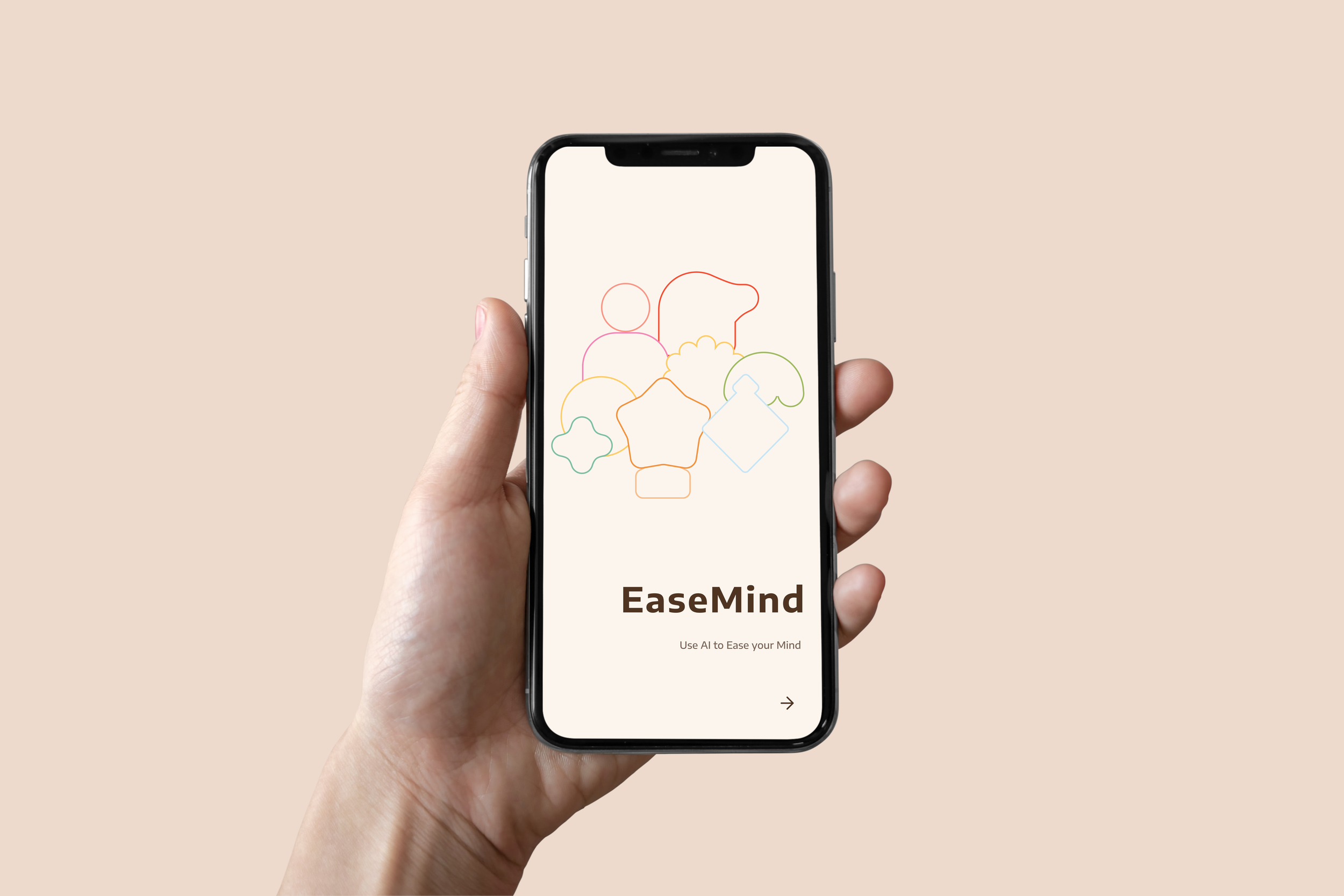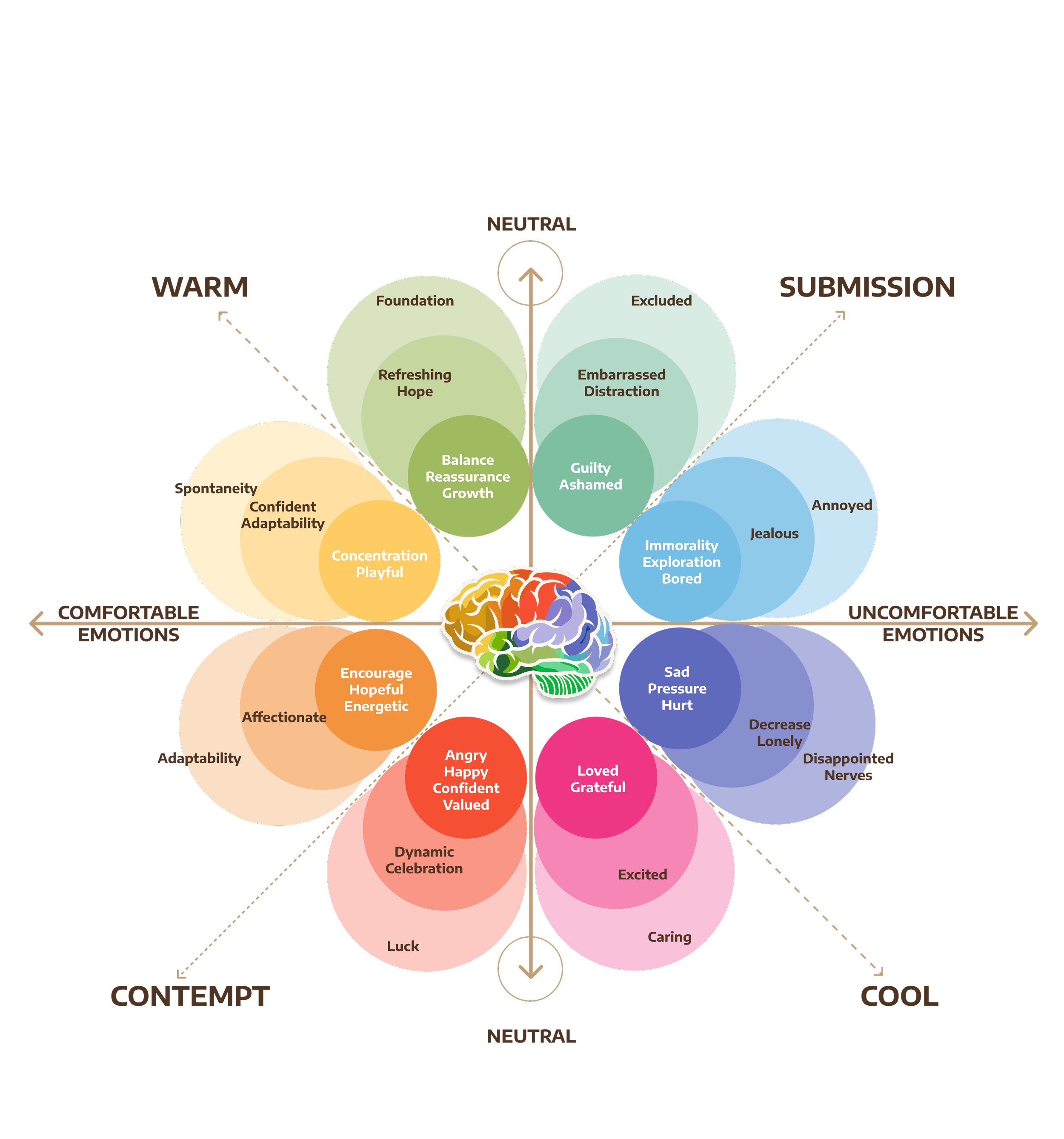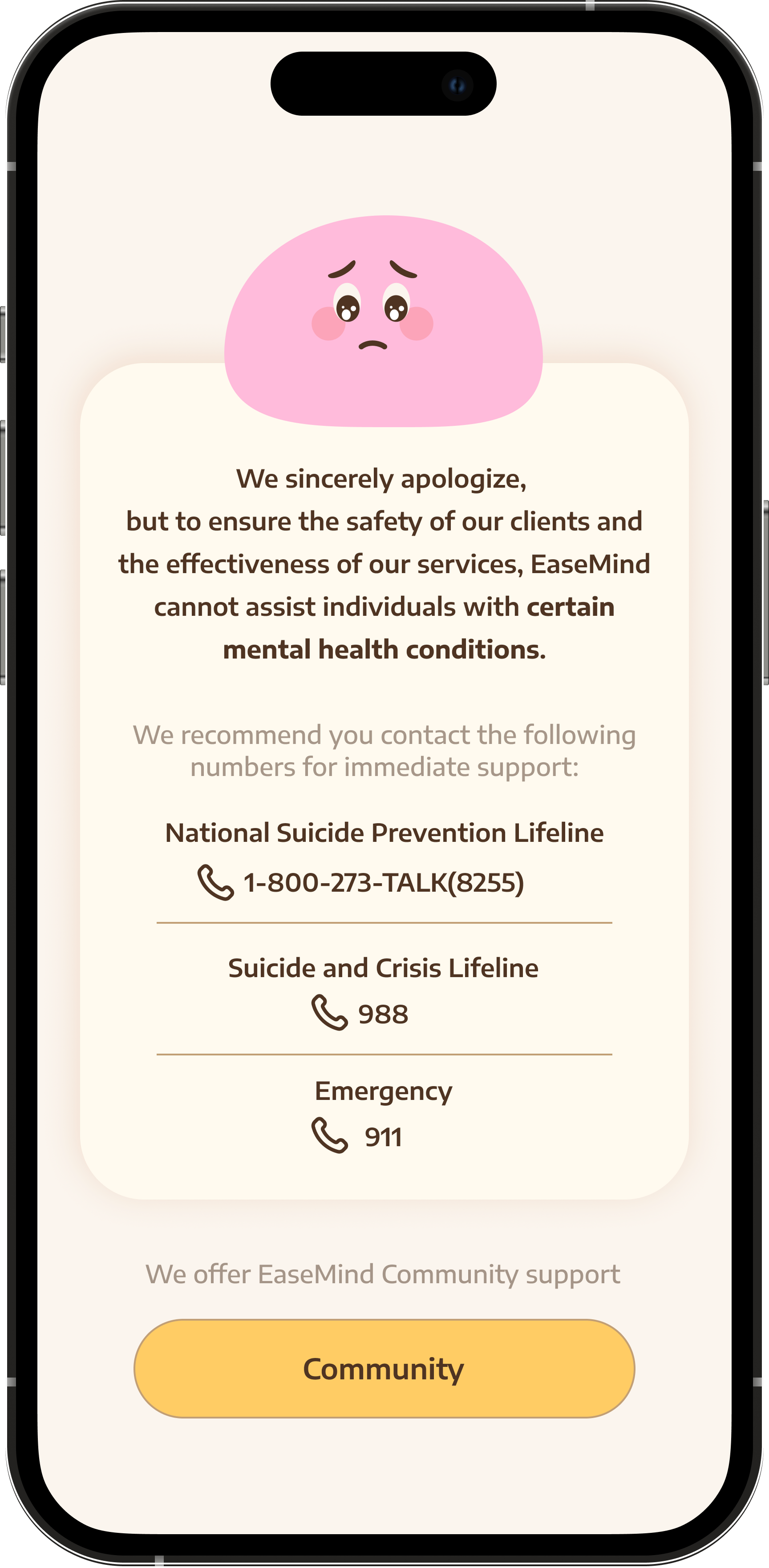EaseMind
Psychology Standards-Aligned Prescreening Mobile App
A mobile mental-health prescreening service that replicates the first therapy session, guiding users through a streamlined, psychologically sound intake, generating an in-app User Insight Report for self-reflection and an auto-generated Therapist PDF Report to optimize the live session.A mobile mental-health prescreening service that replicates the first therapy session—guiding users through a streamlined, psychologically sound intake, generating an in-app User Insight Report for self-reflection and an auto-generated Therapist PDF Report to optimize the live session.
Design Scope
Research, Information Architecture, Wireframes, User Flow, Design System, Prototype, Animation, Design Thinking, Market Research, UX Strategy, Branding design, Marketing Assets Design
Duration
Feb 2024 - May 2024
Tools
Role
UX/UI Design Lead
Collaborated with a product manager and mental health professionals.
Applied my Trauma-Informed Coaching & Counseling certification to ensure design choices promoted safety, trust, and empowerment.
“From now, you are not alone.”
Key Findings
We can’t wait 6 weeks for help.
the U.S. age-adjusted suicide rate rose from approximately 10.9 per 100,000 in 2002 to 14.2 in 2022, underscoring a 30% increase (with a brief dip around 2020)
Design Challenge and Constraints
In the U.S., the mental health crisis is severe—suicide is the second leading cause of death among people under 35 years old. In 2023, over 49,000 Americans died by suicide—that’s one death every 11 minutes (CDC). Existing pre-screening services are costly within average 6-week wait times, slow, and inaccessible, leaving many without timely intervention., and $250 per session costs. This leads to missed opportunities for timely intervention.”
the percentage of adults receiving mental health treatment climb from 19.2% in 2019 to 23.9% in 2023
https://www.cdc.gov/nchs/products/databriefs/db509.htm?utm
Emotional Safety
First contact involves sensitive disclosures.
Soft, Cartoonish Visual Language
Lower anxiety and stigma.
Low cost & Friction
Any barrier kills conversion.
Crisis Intervention
Must route high‑risk users instantly.
Privacy and Compliance
Clear disclaimers about AI’s role & privacy-first interface
Dual Reports
Both parties need immediate value
Components in Design System
Improved Emotional Clarity: consistent shapes and shading make each mood instantly recognizable
How We Visualize Emotions?
Shapes, colors, and expressions form the foundational elements of emotive characters. By combining these elements, we create characters that strongly represent psychological emotions. These characters can be used to personify AI, and they can also extend to brand imagery and motion design.
Psychology of ‘Color’
After consulting with professional psychologists, we have differentiated various emotional colors within the same brand color spectrum.
Risk-Based Feature Segmentation
Users start with a pre-registration questionnaire. The system evaluates risk and segments them into two paths.
Design Challenge
In high-stakes mental health contexts, unrestricted access to all features can introduce ethical and compliance risks. Allowing high-risk users to interact freely with AI chatbots or generate sensitive reports could cause more harm than good. The challenge was to design a segmentation system that both protects vulnerable users and maintains a positive experience for those at lower risk.
High-Risk Users— Reduce anxiety, avoid stigmatization, and encourage safe next steps
Access limited to a curated Community space, where licensed therapists publish supportive, verified content.
Prominent display of the 988 Suicide & Crisis Lifeline, with “one-tap call” functionality for immediate support.
Interface design emphasized cool tones and soft shapes.
I chose used collapsible cards to strike a balance between overview and detail. By default, users see the full report outline without all the text, so they understand the scope of their insights. And prevents information overload and keeps the interface clean and approachable.
Users choose where to dive deeper, reinforcing autonomy and matching their personal pacing. This progressive-disclosure pattern minimizes cognitive load, keeps the screen uncluttered, and puts control in the user’s hands—key for maintaining trust and focus in a sensitive mental-health context.
User Sidee Pre-screening Report
Final Thoughts
Low-Risk Users— Provide an engaging, empowering experience for day-to-day mental health management.
Granted full access to the platform: registration, AI-assisted conversations, mental health reports, and counselor booking.
Visual system applied warm colors and open shapes.
Impact
APA Conference 2024: EaseMind was presented as an exemplar of AI + trauma-informed design, gaining recognition among professionals.
User Feedback: Testers reported feeling “heard” and “safer” using the app compared to other mental health apps.
Professional Validation: Mental health practitioners and researchers responded positively, noting how the app’s flows demonstrated sensitivity to user vulnerability and accessibility.
Working on EaseMind reminded me how delicate the balance is when designing for people in vulnerable states. Every detail, from the interaction flow to the way privacy information was presented, carried weight. I often had to pause and ask myself not only “is this usable?” but also “could this unintentionally cause harm?”
This experience strengthened my attention to the hidden responsibilities of design. Sensitivity, clarity, and restraint proved to be just as critical as aesthetics or efficiency. While EaseMind was rooted in mental health, the broader takeaway is that whenever trust is central, design choices must be both thoughtful and accountable.















